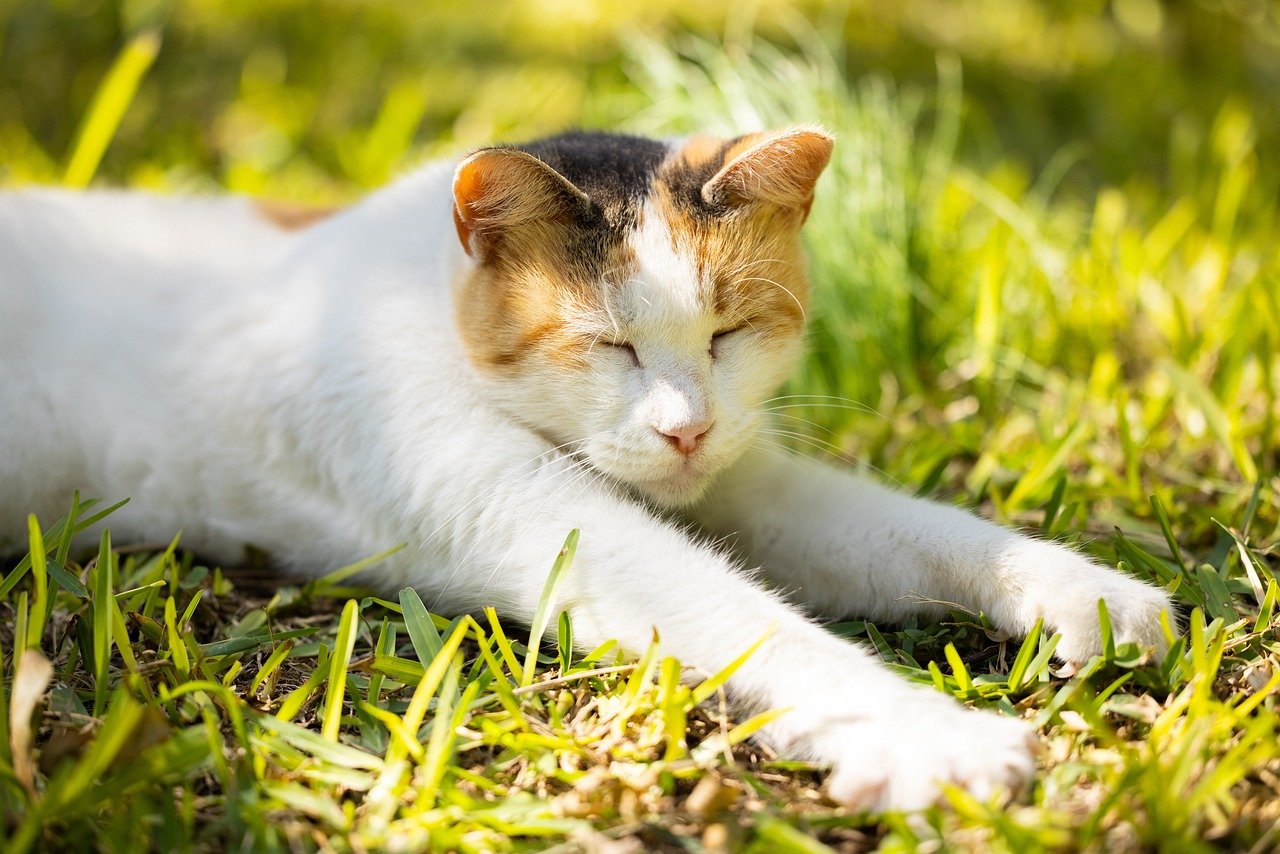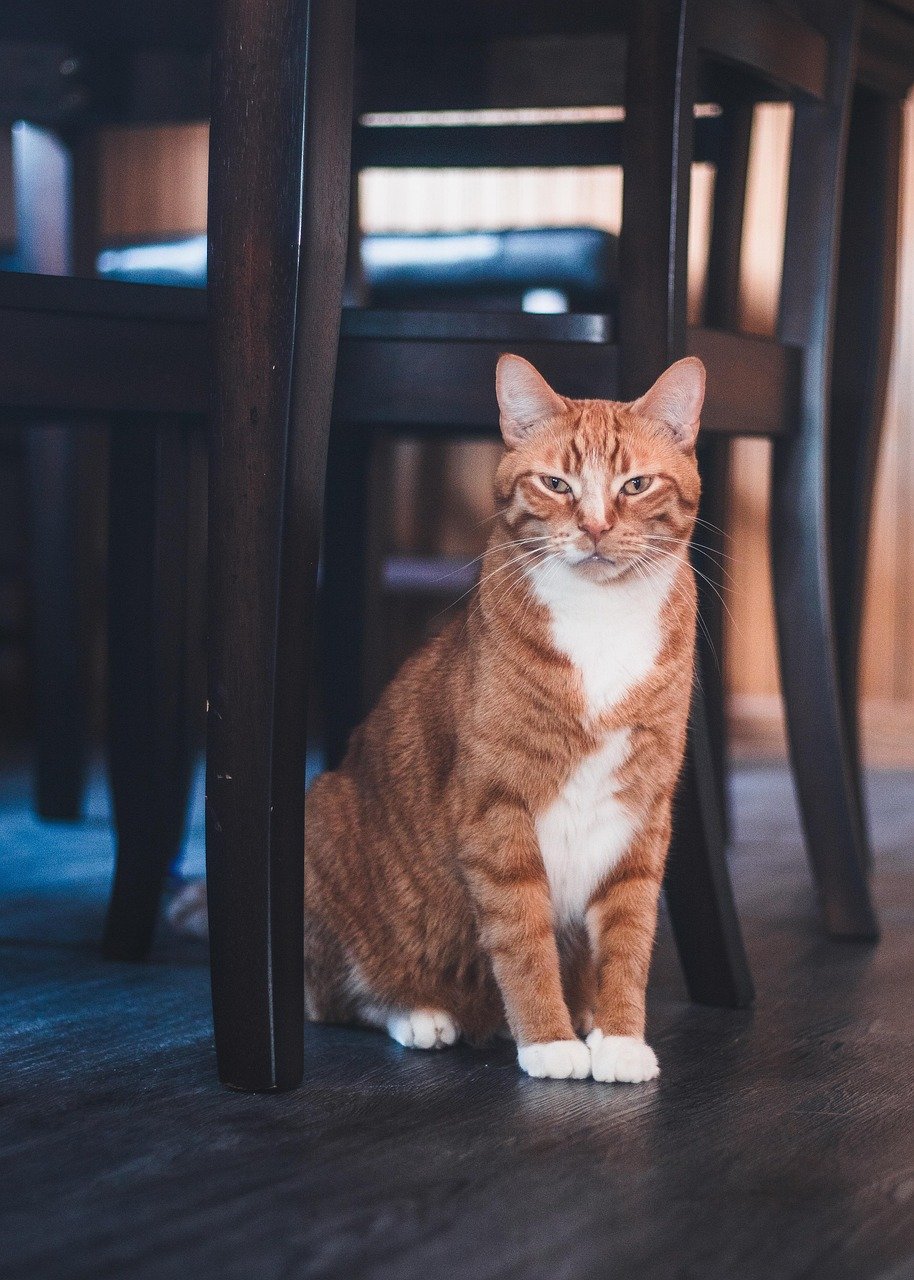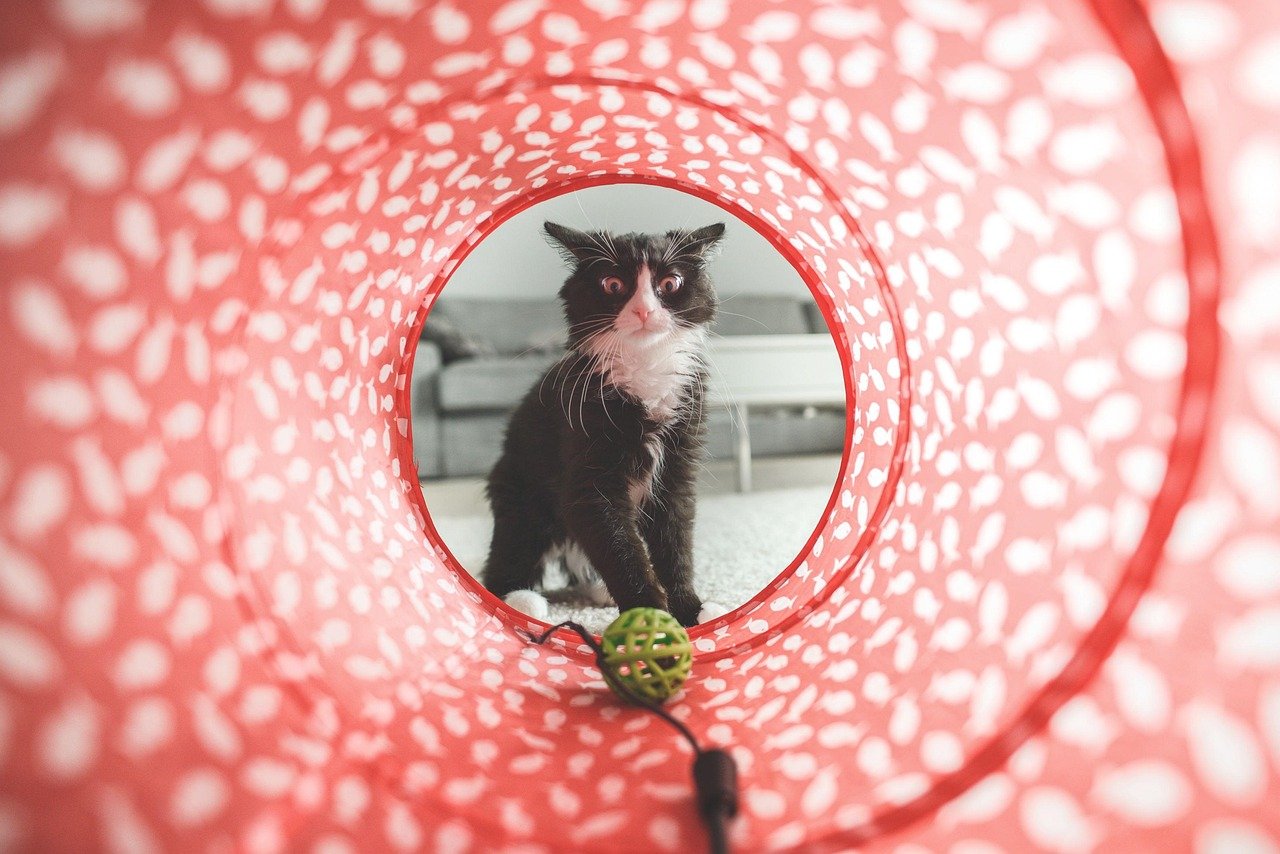Have you ever noticed how some cats seem to cling to routines like a lifeline, while others seem to roll with every twist and turn? For certain cat breeds, change can feel overwhelming or even frightening—but their hearts open wide when surrounded by love and gentle care. If you’ve ever had a feline friend who hid under the bed at the first sign of a suitcase or new furniture, you’ll recognize these sensitive souls. Let’s dive into the world of eight remarkable cat breeds that may struggle with change but absolutely blossom when wrapped in affection and understanding.
Ragdoll: The Gentle Soul Who Needs Stability
Ragdolls are known for their plush, floppy bodies and affectionate nature, but don’t let their relaxed appearance fool you. These cats deeply crave consistency in their environment. Sudden changes—like a new pet or a different feeding schedule—can leave a Ragdoll feeling anxious or withdrawn. They find comfort in familiar faces and routines, often following their favorite humans from room to room like a devoted shadow. A Ragdoll’s need for stability is matched only by their capacity for love; they’ll reward gentle handling and a calm home with endless cuddles and purrs. If you ever need a reminder of the power of patience, a Ragdoll’s response to kindness is truly heartwarming. Living with a Ragdoll means understanding that small disruptions can feel huge to them, but also that your love is the safest anchor they know.
Scottish Fold: Sensitive Ears, Sensitive Heart
The Scottish Fold is easily recognized by its adorable folded ears, but it’s their gentle personality that leaves the biggest impression. These cats often struggle when their world is turned upside down—be it a move to a new home or even a rearranged living room. Their sensitive nature makes them prone to stress, but it also means they’re deeply attuned to the emotions of their favorite people. A Scottish Fold may retreat or become quiet in the face of change, but with patience and a steady stream of affection, they slowly regain their confidence. They thrive in peaceful households where routines are respected and surprises are kept to a minimum. For these cats, love isn’t just a comfort—it’s their sanctuary. When they feel secure, Scottish Folds reward their families with gentle headbutts and soft, loving gazes.
Persian: The Royal Who Loves Familiarity
Persians are the epitome of feline elegance, with their long, luxurious coats and regal demeanor. Yet beneath that aristocratic exterior lies a heart that beats for continuity. These cats can be especially sensitive to changes in their environment, whether it’s new people, loud noises, or alterations in their daily routine. A Persian’s stress can sometimes show up as hiding, skipping meals, or even changes in grooming habits. What they truly crave is a serene space where every day feels predictable. Give a Persian a calm home, gentle hands, and plenty of quiet affection, and you’ll have a loyal companion for life. Their gratitude shines through in the softest purrs and slow blinks—a secret language of love and trust.
Burmese: Clinging to Comfort and Companionship

Burmese cats are famously affectionate, often described as “velcro cats” for their tendency to stick close to their humans. This strong bond means they can be especially unsettled by changes, such as new pets or shifting family dynamics. A Burmese may become vocal or clingy when feeling insecure, seeking extra reassurance from their chosen person. Their social nature makes them thrive on love, play, and shared routines. Even a small disruption—like a missed playtime—can leave them feeling out of sorts. The key to a happy Burmese is consistency, lots of cuddles, and time spent together. When they feel safe, they’re the life of the party, greeting you at the door and curling up in your lap whenever possible.
Birman: The Introverted Affection Seeker
With their sparkling blue eyes and gentle demeanor, Birmans have a quiet way of capturing hearts. They’re often shy around new people or situations, preferring familiar faces and places. A Birman’s initial reaction to change is usually to retreat and observe from a safe distance. However, once trust is established, their loving nature shines. These cats flourish in homes where routines are respected and their need for gentle reassurance is understood. Birmans are happiest when their world is calm and filled with affection. Their loyalty is unwavering, and they’re known for forming deep, almost soulful connections with their humans.
Russian Blue: Steadfast but Sensitive
Russian Blues are often described as reserved and dignified, but beneath their elegant exterior lies a deeply sensitive spirit. They tend to form powerful bonds with their families, and any disruption—whether it’s a change in schedule or the arrival of new people—can make them uneasy. Russian Blues need time to adjust to new environments and can become withdrawn if pushed too quickly. What helps them most is a gentle approach, soft words, and plenty of love. Once they trust, their affection is unwavering, and they’ll reward patience with gentle nuzzles and soft, rumbling purrs. A stable, loving home is where the Russian Blue truly comes alive, revealing a playful and deeply loyal companion.
Himalayan: The Timid Beauty in Need of Reassurance
The Himalayan, with its striking blue eyes and silky fur, is a cat that often prefers the quiet life. Changes in their environment—like new furniture, visitors, or loud noises—can cause them to withdraw or become anxious. These timid beauties need lots of patience and gentle handling to feel secure. When given time and love, Himalayans gradually open up, showing their playful and affectionate side. They thrive in calm households where routines are predictable, and they’re quick to sense and reciprocate the emotional tone of their family. The love of a Himalayan is a precious thing, earned with kindness and returned in sweet, subtle ways.
Chartreux: The Quiet Observer Who Loves Stability
Chartreux cats are known for their plush, blue-grey coats and calm, observant demeanor. While they may seem unflappable, these cats can be quite sensitive to changes in their environment. Whether it’s a new pet, a different feeding dish, or even a change in their favorite window perch, Chartreux cats notice—and sometimes struggle with—these disruptions. They prefer a life where routines are maintained and surprises are few. Their attachment to their humans is strong, though often expressed in understated ways. When a Chartreux feels secure, they’ll offer gentle affection and even a little playful mischief, proving that love and stability are the foundations of their happiness.
Why Change Feels So Overwhelming for Sensitive Breeds
For these eight breeds, change isn’t just a minor inconvenience—it can feel like their whole world is shifting. Sensitive cats rely on their environment to feel safe, and any disruption can send them into a spiral of anxiety or withdrawal. Unlike their more adaptable counterparts, these breeds often take longer to adjust to new situations. Their heightened sensitivity also means they’re deeply affected by the emotions and stress levels of their humans. Understanding this allows owners to offer extra patience and reassurance during times of transition. With the right support, even the most change-averse cat can learn to navigate new experiences with a bit more confidence, always anchored by love.
Building Routines That Comfort and Nurture
Establishing consistent routines is a powerful way to help sensitive cats feel secure. Simple daily rituals, like regular meal times, play sessions, and cuddle hours, provide structure that these breeds crave. Even minor changes—like a new brand of litter or a different feeding spot—should be introduced gradually. By letting your cat know what to expect, you offer a sense of control in a world that can sometimes feel unpredictable. Over time, these routines become the foundation for trust and comfort. For breeds that struggle with change, predictability isn’t boring—it’s a lifeline.
The Power of Gentle Affection

There’s something magical about the way a cat responds to gentle affection, especially those who are naturally wary or anxious. For these breeds, a soft touch, slow approach, and calm voice can make all the difference. They may not always seek out attention, but when offered patiently, they’ll often respond with quiet gratitude. Small gestures—like a gentle chin scratch or a warm lap—help reinforce the bond between cat and human. In times of change, these moments of love are even more important, providing reassurance and a sense of safety. Love is their anchor, and your patience is their comfort.
Helping Your Cat Adjust to New Environments

Moving to a new home or introducing major changes can be especially challenging for sensitive cats. It’s important to give them a safe space—a quiet room with familiar toys, bedding, and litter box—where they can gradually acclimate. Allow your cat to explore at their own pace, and avoid forcing interactions. Using familiar scents, like items from your old home, can also help ease the transition. Over time, most cats will begin to venture out and adjust, especially if their routines and sources of comfort remain unchanged. Remember, your presence and patience are the most reassuring things you can offer.
Recognizing Signs of Stress in Sensitive Cats
It’s not always obvious when a cat is feeling overwhelmed by change. Some signs to watch for include hiding, reduced appetite, excessive grooming, or sudden aggression. Vocal breeds may become quieter, while quiet breeds might vocalize more. Changes in litter box habits can also indicate stress. Recognizing these signals early allows you to make adjustments and offer extra comfort. Never punish a stressed cat; instead, provide safe spaces, consistent routines, and plenty of affection. Over time, your understanding can help soothe even the most anxious feline heart.
Creating a Safe Haven at Home
For cats that struggle with change, having a designated safe haven is essential. This could be a cozy corner, a favorite cat bed, or even a cardboard box tucked away from busy areas. The key is to provide a space where your cat feels completely secure and undisturbed. Encourage your cat to use this haven during stressful times, and make sure it’s always accessible. Filling the area with familiar scents and comforting items can further enhance its calming effect. Over time, your cat will learn that no matter what changes outside, there’s always a sanctuary waiting just for them.
The Importance of Family Bonds
Sensitive cat breeds often form deep, lasting bonds with their families. They rely on these connections for reassurance and comfort, especially during times of uncertainty. Regular affection, gentle play, and quiet companionship strengthen these bonds. Family members should be aware of the cat’s need for stability and avoid introducing unnecessary stress. When everyone in the household is on the same page, the cat quickly learns that their home is a place of safety and love. These powerful bonds transform worry into trust and anxiety into contentment.
Adopting a Sensitive Cat: What to Expect
If you’re considering adopting one of these sensitive breeds, be prepared for a relationship built on patience and empathy. The initial adjustment period may be long, with your new cat hiding or acting shy. It’s important not to rush their process; let them come to you in their own time. Provide consistent routines, gentle handling, and plenty of love. Over weeks or even months, you’ll see your cat’s personality blossom. The rewards of adopting a sensitive cat are immense: the depth of their trust and love is unlike anything else.
The Joys of Loving a Sensitive Soul
Loving a cat who struggles with change can be both challenging and deeply rewarding. These cats may require more patience and understanding, but they repay kindness with unwavering loyalty and affection. Their little victories—like emerging from hiding or seeking out a cuddle—become moments of pure joy. Living with a sensitive cat teaches us the value of compassion and the transformative power of love. Every day is a reminder that gentle care can turn even the most anxious heart into one that thrives.
Training and Enrichment for Sensitive Breeds

Even sensitive cats need mental stimulation and enrichment to stay happy and healthy. Choose toys and activities that are gentle and non-threatening, such as feather wands, puzzle feeders, and interactive play sessions in quiet settings. Positive reinforcement training—using treats and praise—can also help build confidence and trust. Enrichment doesn’t have to be overwhelming; even a sunny window perch or a new scratching post can bring joy. The key is to introduce new experiences slowly and always be mindful of your cat’s comfort level.
Finding Support When You Need Help
Sometimes, even with the best intentions, a sensitive cat may continue to struggle with change or anxiety. Don’t hesitate to reach out to your veterinarian or a feline behaviorist for guidance. There are many strategies and resources available to help your cat adjust, from calming pheromone diffusers to specialized behavior modification plans. You’re not alone in this journey—many cat lovers have walked the same path and found solutions that work. The most important thing is to keep your cat’s well-being at the heart of every decision.
Celebrating the Unbreakable Bond
At the end of the day, what matters most to these sensitive breeds is the love and connection they share with their humans. Every gentle word, every soft touch, and every moment of understanding strengthens the bond you share. These cats teach us that patience, empathy, and love can overcome even the hardest challenges. Their gratitude is shown not in grand gestures, but in the quiet comfort of a warm body curled up beside you. Isn’t it amazing how the simplest acts of love can mean the world to a sensitive soul?
Hi, I’m Bola, a passionate writer and creative strategist with a knack for crafting compelling content that educates, inspires, and connects. Over the years, I’ve honed my skills across various writing fields, including content creation, copywriting, online course development, and video scriptwriting.
When I’m not at my desk, you’ll find me exploring new ideas, reading books, or brainstorming creative ways to solve challenges. I believe that words have the power to transform, and I’m here to help you leverage that power for success.
Thanks for stopping by, Keep coming to this website to checkout new articles form me. You’d always love it!






